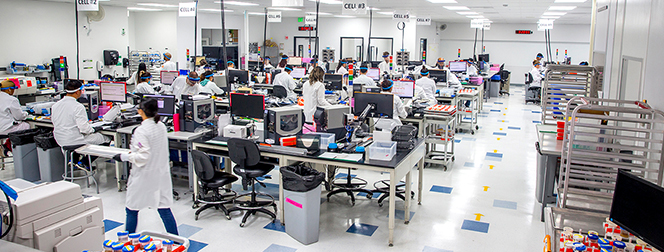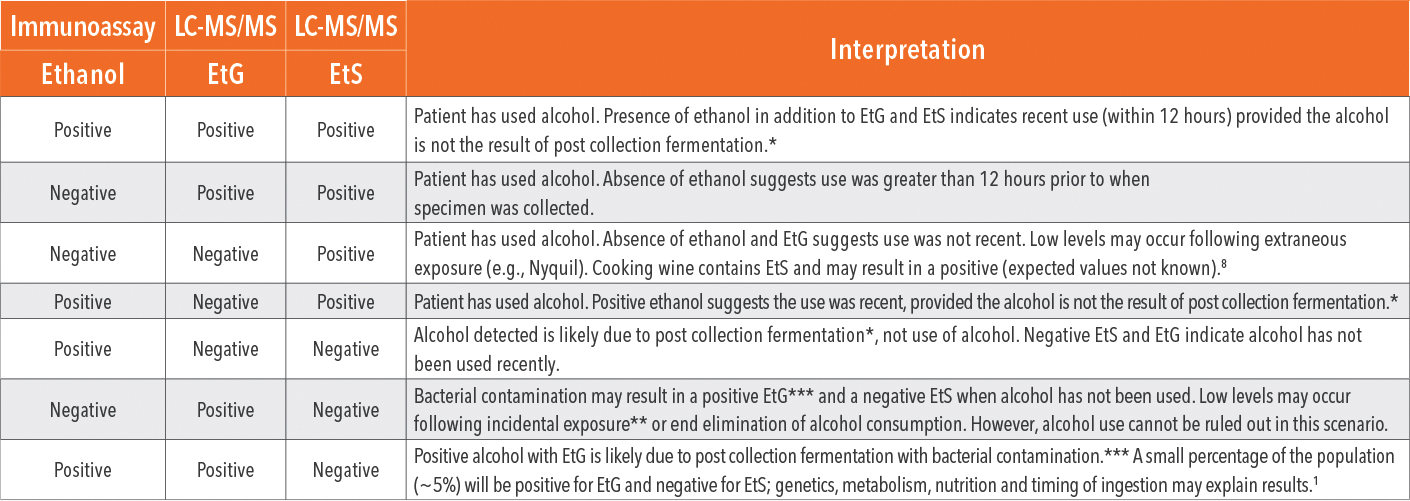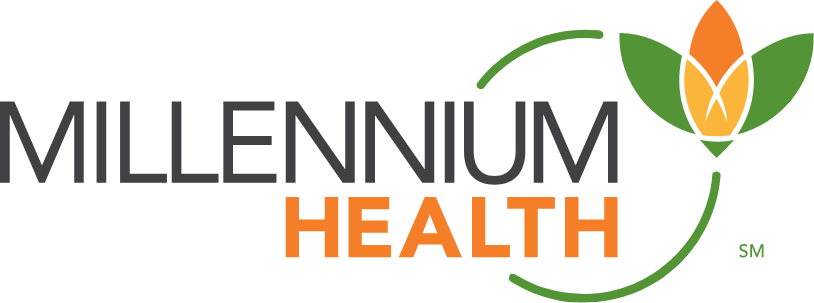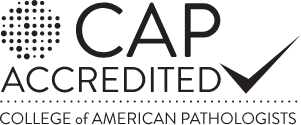Technical Bulletin: Urinary Analysis of Alcohol by Definitive Testing Using LC-MS/MS

Alcohol use is a widespread problem within the United States population. Alcohol potentiates the effects of many medications and may cause other complications. Clinicians often monitor alcohol use as a condition of treatment and utilize urine testing to confirm abstinence.
Detecting alcohol use by measuring urinary ethanol alone has limitations. In patients with diabetes mellitus, positive test results for urinary ethanol are often caused by fermentation of urinary glucose and not alcohol consumption.1,2 Ethanol is rapidly metabolized, and detection can easily be avoided by not drinking alcohol 8-12 hours before the urine specimen is collected. To overcome these limitations, Millennium Health offers the analysis of ethyl glucuronide (EtG) and ethyl sulfate (EtS), two ethanol metabolites that are not produced by fermentation. The presence or absence of EtS and EtG provides the clinicians with a more accurate indication of a patient’s alcohol use.
Millennium Health uses a proprietary high-throughput Liquid Chromatography-Tandem Mass Spectrometry (LC-MS/MS) method that measures EtG and EtS in urine.3 This technique (LC-MS/MS) pairs high performance liquid chromatography with sequential mass spectrometry to provide highly accurate medication identification with minimal cross-interference from other drugs or dietary supplements.
Metabolism and Elimination
Ethanol is eliminated primarily by oxidative metabolism in the liver to acetone and acetaldehyde at a rate of approximately one drink (12 oz. beer, 5 oz. glass of wine, 1.5 oz. distilled spirits) per hour.4 EtG and EtS are minor metabolites of ethanol, formed in the liver by the conjugation of ethanol with glucuronic acid and sulfate, respectively.
Interpretation of Results
EtG and EtS levels cannot be used to estimate the amount of alcohol consumed except in a very general sense.4,5
For example:
- Low levels may be the result of excessive alcohol use days before collection.
- Low levels may also indicate peak urinary levels of incidental exposure.
- High levels can be the result of responsible drinking the evening before collection.
- A social drinker consuming two glasses of wine within 12 hours of testing may have EtG levels above 10,000 ng/mL the following day.4
Sources of incidental exposure to alcohol include hand washes/sanitizers, hygiene products, cosmetics, foods, mouth washes, perfume, lotions, and medications both prescription and over the counter (OTC) products that contain alcohol.6 Millennium Health uses a cutoff level of 500 ng/mL for both EtG and EtS to minimize positive results that can occur with the normal use of these products.7 However, some OTC products contain up to 25% alcohol and may produce a positive result at this level.
Table 1

*Fermentation of urinary glucose to ethanol may occur in diabetic patients. Additionally, fermentation may occur due to improper storage of the specimen and/or during transit.
**In general, incidental EtG levels tend to be at or around the cutoff of 500 ng/mL and typically do not exceed 2000 ng/mL7
***Expected urinary EtG levels due to bacterial contamination have not been established
Window of Detection
Window of detection describes the period of time in which drugs and/or their metabolites can be detected in biological fluids using analytical techniques including LC-MS/MS. Various factors can impact the window of detection and lead to wide variation among different drugs. These include elimination half-life (t½) of the drug and its measured metabolite, administered dose, concomitant medications, drug interactions, sensitivity of the detection method, cutoff levels and physiological differences among individuals that can lead to variations in how the drug is processed by the body. The urinary window of detection for ethanol is 8-12 hours6,9 and 1-3 days6,9 for EtG and EtS. EtG and EtS appear, in urine, within one hour of alcohol consumption.
Limitations
- Test results positive for ethanol may be due to fermentation during transit.
- Reference ranges for urinary metabolites EtG and EtS are not established. These tests cannot be used to determine the source of alcohol or specific amount consumed.
- Interpretation of LC-MS/MS results should include clinical observation and professional judgment.
- Negative results can reflect drug concentrations below the cutoff level or non-presence of a drug or metabolite.
How to Order
Using a Millennium Health test requisition (paper or electronic), medically necessary tests are ordered based on patient-specific elements identified during the clinical assessment and documented in the patient’s record by the provider. Results are reported, generally, within one business day of specimen receipt at our lab.
Specimen Requirements
- 1-2 mL of urine (1 mL usable)
- To consult a toxicologist for assistance in results interpretation, please call the Millennium Health RADAR®/MAPP® Hotline at (866) 866-0605, Monday-Friday 5:00am to 5:30pm (Pacific Time).
References
- Helander A and Beck O. Ethyl sulfate: a metabolite of ethanol in humans and a potential marker of acute alcohol intake. J. Anal. Toxicol. 2005. 29:270-27.
- Helander A, Bottcher M, Fehr C, Dahlmen N, and Beck O. Assessment and Detection: detection times for urinary ethyl glucuronide and ethyl sulfate in heavy drinkers during alcohol detoxification. Alcohol & Alcoholism 2009. 44:55-61.
- Crews B, West, R, Gutierrez, R, Latyshev S, Mikel C, Almazan P, Pesce A, West C, and Rosenthal M. An improved method of determining ethanol use in a chronic pain population. J. Opioid Manag. 2011. 7(1):27-34.
- Rosano TG and Lin J., Ethyl glucuronide excretion in humans following oral administration of and dermal exposure to ethanol. J. Anal.Toxicol. 2008. 32: 594-600.
- Crews B, West R, Latyshev S, Mikel C, Almazan P, Pesce A, West C, and Rosenthal M. Improved detection of ethyl glucuronide and ethyl sulfate in a pain management population using high-throughput LC-MS/MS. J. Opioid Manag. 2011. 6(6):415-421.
- The Role of Biomarkers in the Treatment of Alcohol Use Disorders, 2012 Revision. Substance Abuse and Mental Health Services Administration (SAMHSA). SAMHSA Advisory Spring 2012: 11(2).
- Reisfield G, Goldberger B, Crews B, Pesce A, Wilson G, Teitelbaum S. and Bertholf R. Ethyl glucuronide, thyl sulfate, and ethanol in urine after sustained exposure to an ethanol-based hand sanitizer. J. Anal.Toxicol. 2011. 35(2):85-91.
- Gudrun Hoiseth et al. Levels of Ethyl Glucuronide and Ethyl Sulfate in Oral Fluid, Blood, and Urine After Use of Mouthwash and Ingestion of Nonalcoholic Wine. J. Anal. Toxicol. 2010. Vol. 34:84-88.
- White RM, Black ML. Pain Management Testing Reference. Washington, DC: AACC Press 2007.





